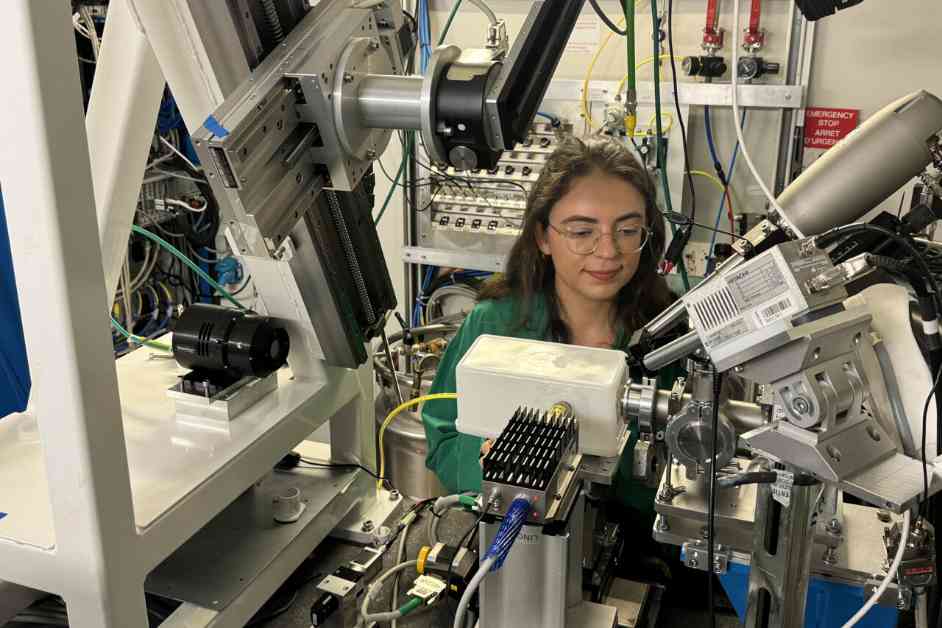Exploring Uranium’s Complex Electron Shells: A Deep Dive into Tricky Chemistry
The heavy metal uranium has long been a subject of fascination for scientists due to its intricate chemistry and diverse bonding behaviors. An international team of researchers recently delved into the unique properties of low-valent uranium compounds using synchrotron light at the Rossendorf Beamline (ROBL), shedding new light on the complex nature of this element.
At the Helmholtz-Zentrum Dresden-Rossendorf (HZDR), scientists have established four experimental stations for radiochemical experiments at the European Synchrotron Radiation Facility (ESRF) in Grenoble. These facilities provide a safe and controlled environment for conducting research on actinide elements like uranium.
Uranium, a member of the actinide series on the periodic table, is known for its complex electron configurations and diverse oxidation states. The behavior of uranium’s 5f electrons, located in its inner shells, plays a crucial role in determining its chemical properties and bonding characteristics with other elements.
Ph.D. student Clara Silva from HZDR’s Institute of Resource Ecology explains, “In our current study, we focused on low-valent uranium compounds, which have more electrons in their inner shells compared to other uranium compounds. By investigating the behavior of the 5f electrons, we gained insights into how uranium forms bonds and interacts with other elements.”
To conduct their research, the team utilized resonant inelastic X-ray scattering (RIXS), a powerful technique that involves bombarding a material with X-rays and analyzing the energy lost during scattering. This method provided detailed information about the electronic structure of uranium, particularly the behavior of its 5f electrons.
In addition to RIXS, the researchers used the HERFD-XANES method, which combines high-energy resolution fluorescence detection with X-ray absorption near edge structure analysis to gain a deeper understanding of the electronic structure of materials.
The team’s efforts led to the accurate identification and detection of the three-valent oxidation state in uranium (U(III)), revealing how uranium atoms bond with elements like fluorine and chlorine. This breakthrough provides valuable insights into actinide bonding and the role of uranium’s 5f electrons in responding to changes in their environment.
Studying low-valent uranium compounds presented challenges due to their instability compared to other uranium-containing materials. To ensure the stability of the samples, the experiments were conducted under anoxic conditions and at extremely low temperatures, requiring meticulous control of the experimental environment.
Professor Kristina Kvashnina, head of ROBL and the Institute’s Department Molecular Structure, highlights the significance of the team’s findings after 15 years of dedicated research. She notes, “The sensitivity of uranium’s 5f electrons to their local environment was a surprising discovery, challenging existing theories and paving the way for new research in actinide physics and chemistry.”
Beyond the fundamental implications of their work, the team’s research has practical applications in radiation protection and the safety of radioactive waste repositories. Low-valent uranium compounds, known for their low solubility, can help contain contamination and reduce environmental mobility of uranium.
The insights gained from studying low-valent uranium systems have broader implications across various scientific disciplines. By improving theoretical models that predict the behavior of complex elements like uranium, scientists can advance research in fields ranging from nuclear science to environmental chemistry.
Overall, the team’s exploration of uranium’s complex electron shells has provided valuable insights into the intricate chemistry of this element and its unique bonding behaviors. Their research opens up new avenues for further study and enhances our understanding of actinide elements in both fundamental and applied contexts.













